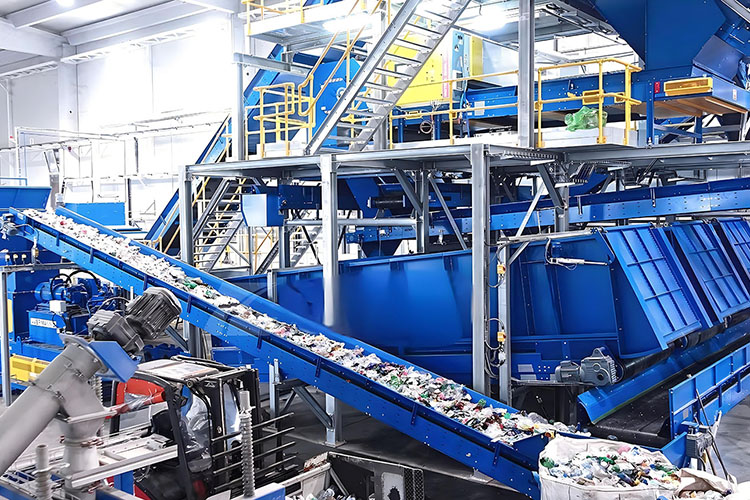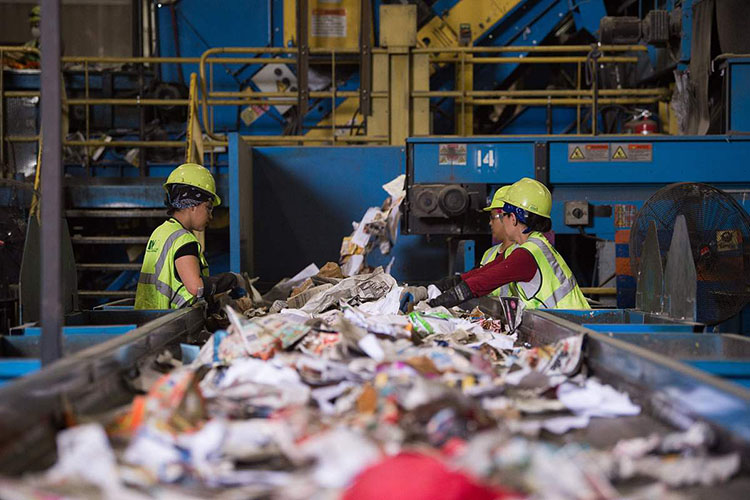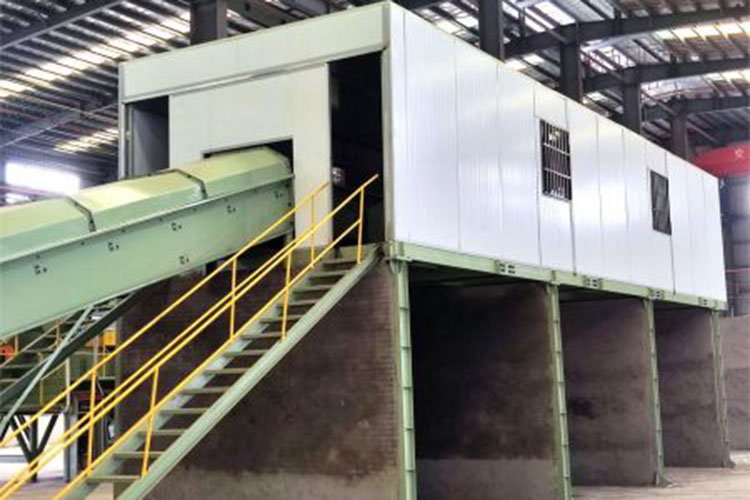The domestic waste sorting and feeding system is one of the key parts of modern municipal solid waste treatment facilities. It is responsible for the preliminary classification and sorting of original domestic waste so that the subsequent treatment process can be more efficient and environmentally friendly. The following is a detailed introduction to the sorting and feeding system for domestic waste:
Feed conveyor systems usually consist of conveyor belts or other conveying devices used to transport municipal solid waste from collection points to treatment facilities. This system needs to have stable conveying capacity and the ability to adapt to different types of waste to ensure a continuous supply of domestic waste.

Pretreatment equipment is usually installed at the front end of the feed conveyor system to initially remove large objects, dangerous goods, perishables, etc. from the garbage. Pretreatment equipment includes vibrating screens, magnets, manual picking tables, etc. Drum screens screen waste by size and remove large objects; air separators use airflow to separate light organic matter; and magnetic separators remove iron objects from waste. Their features include easy operation, high efficiency, and adjustable adaptability to different waste characteristics, jointly improving waste processing efficiency and resource recycling rate.
The domestic waste sorting and feeding system will set up a manual sorting workstation, and workers will manually sort. Used to remove bulky items, hazardous items, and valuable items that can be recycled, such as glass, metal, plastic, etc.
The domestic waste sorting and feeding system includes various mechanical sorting equipment for automatically classifying waste. Equipment includes air flow separators, magnetic separators, optical separators, etc. These devices can separate waste into different categories, such as organic matter, plastic, metal, etc., based on the size, density, color and other characteristics of the objects.

The domestic waste sorting and feeding system applies sensor technology, such as infrared sensors, laser sensors, etc., to realize automatic identification and sorting of waste. It can improve the accuracy and efficiency of sorting and reduce manual intervention.
In order to ensure the stable operation and efficient work of the entire feeding system, it is usually equipped with an intelligent control system. It can not only monitor the operating status of the equipment, adjust the conveying speed, and optimize the sorting process, but also perform alarm and fault handling as needed to ensure the reliability and safety of the system.

Through the synergy of the above components, the domestic waste sorting and feeding system can divide the original mixed waste into different categories, providing a basis for subsequent processing and utilization, and also promoting the recycling and recycling of waste. accomplish.
Yongle Environmental Protection is mainly engaged in the research and development, production and sales of complete sets of technical equipment for organic solid waste disposal and comprehensive utilization. Production and manufacturing, domestic waste treatment equipment, tire pyrolysis equipment, medical waste disposal equipment, hazardous waste disposal equipment, and achieve efficient and comprehensive utilization of resources through independently developed low-temperature anaerobic pyrolysis equipment technology solutions.
Tags:Detailed introduction of sorting and feeding system in domestic waste treatment,domestic waste,Yongle Group
 Latest news
Latest news


























